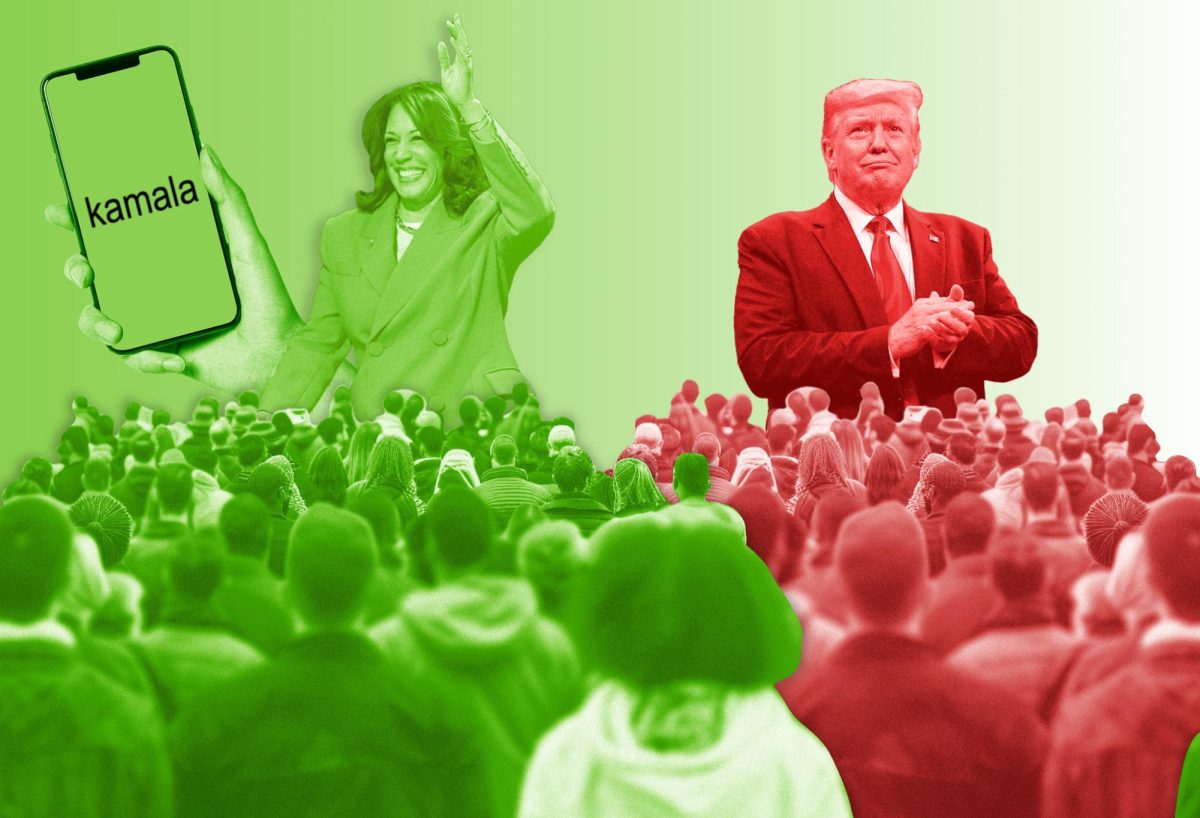The presidential candidates have pursued radically different approaches to bolstering the support of young voters. However, both strategies remain deeply flawed.
Harris appeals to younger voters by painting an unflattering portrait of Donald Trump and his running mate–from highlighting their “weird” personalities on social media to reminding people of their unpopular positions on social issues.
Harris and her campaign doubled down on connecting Trump with the downfall of Roe v. Wade and the Heritage Foundation’s policy book “Project 2025.”
Trump’s strategy bears similarities to her playbook. He regularly criticizes her positions on immigration, crime and the economy–the latter of which will determine which direction many young voters swing.
Trump has also sought attention by intentionally seeking out interviews with the press or influencers. He seeks to earn the support of moderate voters by gaining the endorsements of politicians like Robert F. Kennedy Jr. and distancing himself from controversial positions on social issues.
Young voters primarily care about the presidential candidates providing clear and attainable solutions to the issues they feel most passionate about. Yet, candidates often fail to pursue this simple strategy of earning their support.
Instead, both candidates narrow their focus on attaining celebrity connections or the “cool” persona they believe Gen Z voters will admire.
Harris opened her campaign event in Atlanta with a performance from Meghan Thee Stallion–which fell completely flat given she had to omit every other word. Her nearly 10 minute performance was followed by the rapper Quavo speaking about gun control.
On the day Joe Biden bowed out of the race, the British singer Charli XCX tweeted, “Kamala IS brat.”
Harris immediately utilized this moment to rebrand herself by embracing the “brat” label–the title of Charli XCX’s new album. Her campaign’s official X account now, formerly known as Twitter, contains a profile header with the neon green color of the brat album.
Charli XCX described the “brat” persona as someone “who is a little messy and maybe says dumb things sometimes, who feels herself but then also maybe has a breakdown but parties through it.”
It’s certainly not a persona that one would deem appropriate for a presidential candidate to adopt. Yet, that’s exactly what Kamala Harris did, believing it would appeal to younger voters.
At the Democratic National Convention, the actress Mindy Kaling introduced Nancy Pelosi on stage with a bizarre comparison by saying, “This woman was doing brat before brat was brat. The mother of dragons, please welcome, Nancy Pelosi.”
While Harris has sought to affiliate herself with celebrities to gain the support of young Americans, Donald Trump continuously shoots himself in the foot with his rhetorical approach.
He speaks in the vernacular of the average American citizen, which is a breath of fresh air for Americans who feel like politicians speak their own language. However, one can’t get through a 24-hour news cycle without seeing some unhinged comment he delivered.
While Trump’s pop culture speakers held less presence in the Republican National Convention, they were painful to watch.
If a Trump speech that dragged on and on wasn’t enough for viewers to stop watching, then Hulk Hogan ripping off his shirt certainly was.
He never fails to take a jab at his competitors. While these comments can garner laughs, it doesn’t appeal to young voters who desire a candidate that prioritizes unity and respect.
Harris utilized her speeches at the DNC to focus on unity and the values that Americans share. Trump would be wise to do the same.
Witnessing politicians’ failed attempts at attracting Gen Z voters feels like watching a high-school teacher embarrassing themself by using teenage jargon in an attempt to relate with their students.
It simply doesn’t work.
These strategies to appeal to younger voters should offend Gen Z. When it comes to our generation, Harris relies far too much on “celebrity connections” and trying to pass as the “cool” candidate. It reveals a deeply unserious view of what matters to young voters.
Meanwhile, Trump delivers outrageous comments on an everyday basis. He is his own worst enemy, and the sooner he recognizes that the quicker he can change course.
His primary focus remains the economy, and by highlighting the financial problems that young Americans experience, he can gain their votes.
A candidate’s ethos and views on important issues matter far more to young voters than finding a “cool” candidate or one who delivers the sharpest blow to their competitor.
Yet, their approaches raise an important question for America: does winning the election require providing substantial solutions to issues that impact Americans the most, or simply having the right “vibe” and connections?































































































































































